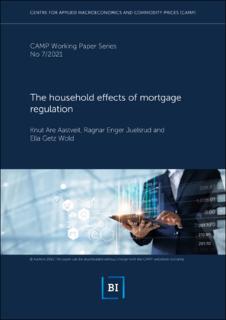The household effects of mortgage regulation
| dc.contributor.author | Aastveit, Knut Are | |
| dc.contributor.author | Juelsrud, Ragnar Enger | |
| dc.contributor.author | Wold, Ella Getz | |
| dc.date.accessioned | 2022-01-03T10:37:10Z | |
| dc.date.available | 2022-01-03T10:37:10Z | |
| dc.date.issued | 2021-12 | |
| dc.identifier.issn | 1892-2198 | |
| dc.identifier.uri | https://hdl.handle.net/11250/2835776 | |
| dc.description.abstract | We evaluate the impact of mortgage regulation on child and parent household balance sheets, highlighting important trade-offs in terms of financial vulnerability. Using Norwegian tax data, we show that loan-to-value caps reduce house purchase probabilities, debt and interest expenses – thereby improving household solvency. Moreover, parents of first-time buyers also reduce their debt uptake, suggesting that concerns about regulatory arbitrage are unwarranted. However, the higher downpayment requirement also leads to a persistent deterioration of household liquidity. We show that this reduction in liquid buffers coincides with larger house sale propensities given unemployment, as households become more vulnerable to adverse income shocks. | en_US |
| dc.language.iso | eng | en_US |
| dc.publisher | BI Norwegian Business School | en_US |
| dc.relation.ispartofseries | CAMP Working Paper Series;07/2021 | |
| dc.subject | Household leverage | en_US |
| dc.subject | Financial regulation | en_US |
| dc.subject | Macroprudential policy | en_US |
| dc.subject | Mortgage markets | en_US |
| dc.title | The household effects of mortgage regulation | en_US |
| dc.type | Working paper | en_US |
| dc.source.pagenumber | 42 | en_US |
Tilhørende fil(er)
Denne innførselen finnes i følgende samling(er)
-
Centre for Applied Macro- and Petroleum economics (CAMP) [130]
Working Papers from Centre for Applied Macro- and Petroleum economics (CAMP)
